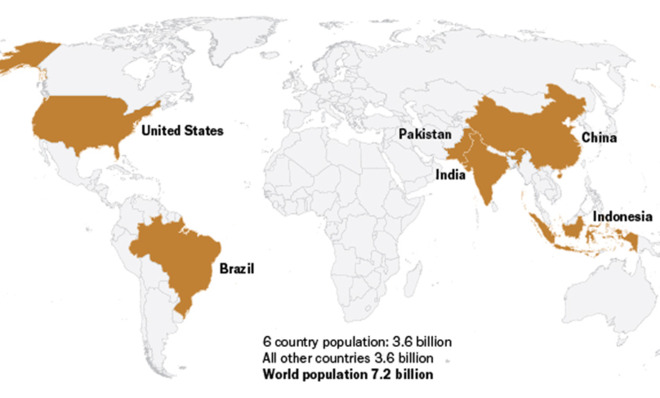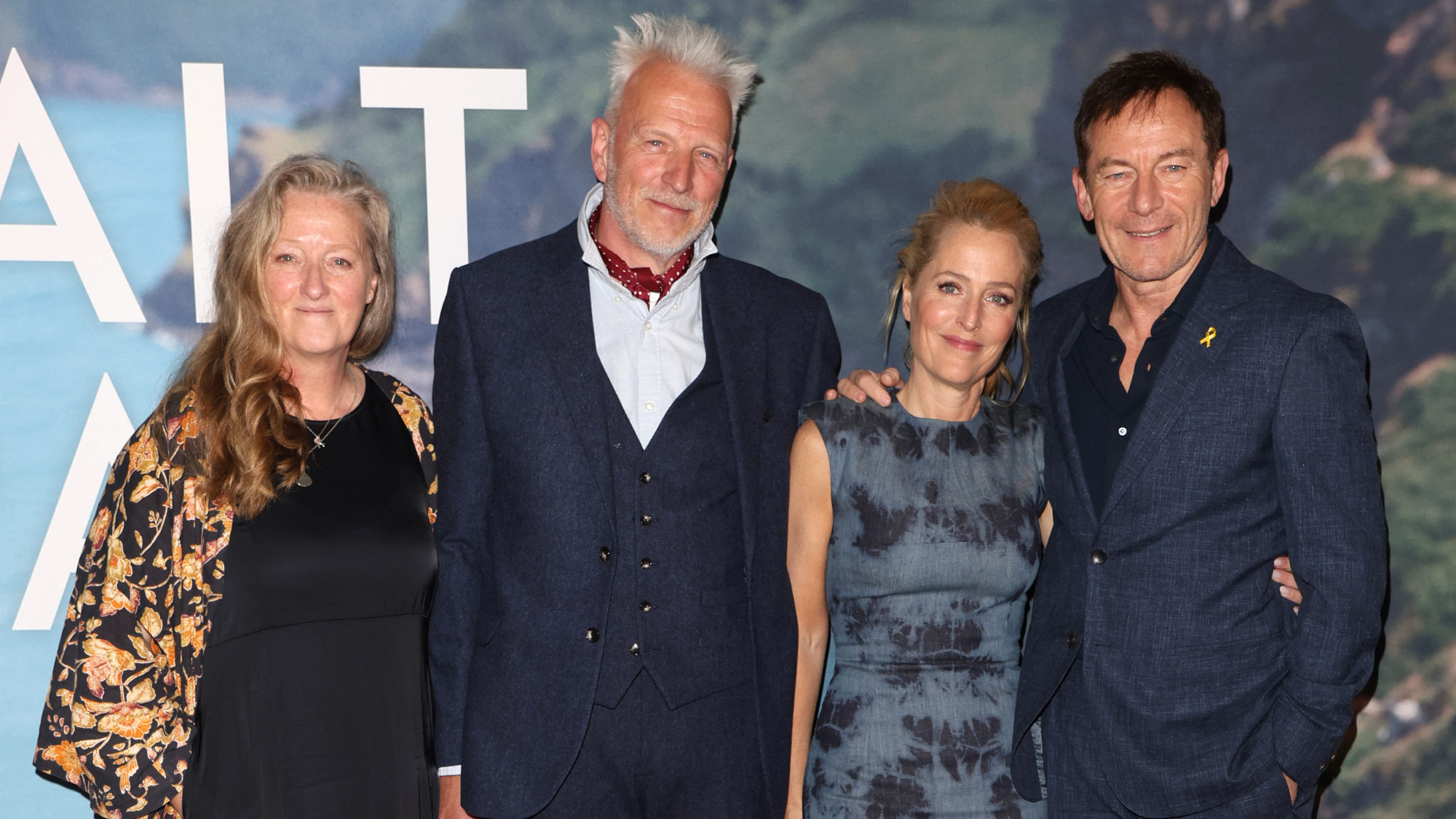Half the world's population lives in these 6 countries
Globally, the population tripled — and the U.S. population doubled — from 1950 to 2010


The Earth's population now sits at around 7.2 billion.
Half of those people, 3.6 billion, live in just a half-dozen countries, according to the United Nations. Check out the map below:
(Pew Research Center)
The Week
Escape your echo chamber. Get the facts behind the news, plus analysis from multiple perspectives.

Sign up for The Week's Free Newsletters
From our morning news briefing to a weekly Good News Newsletter, get the best of The Week delivered directly to your inbox.
From our morning news briefing to a weekly Good News Newsletter, get the best of The Week delivered directly to your inbox.
China remains the world's most populous nation at 1.4 billion people, followed by India with 1.3 billion, according to UN figures. The United States, Indonesia, Brazil, and Pakistan combined all have just under 1 billion people.
According to Pew Research Center, the world's population grew at a rapid pace from 1950 to 2010. Globally, the population tripled, and the U.S. population doubled.
But growth is expected to slow down over the next 40 years as the global population ages.
The world's urban population has also grown rapidly in recent years, with more than half the global population now living in cities. In 1950, 746 million people lived in urban areas compared to 3.9 billion in 2014, according to a new UN report.
A free daily email with the biggest news stories of the day – and the best features from TheWeek.com
By 2050, India is expected to top the charts with 404 million urban inhabitants while China will come second with 292 million urbanites and Nigeria third with 212 million.
Here is an updated list of the world's most populated cities, according to the UN:
1. Tokyo, Japan (38 million)
2. Delhi, India (25 million)
3. Mexico City, Mumbai and Sao Paulo (21 million)
4. Osaka, Japan (20 million)
5. Beijing, China (just under 20 million)
6. New York-Newark area and Cairo, Egypt (18.5 million)
This article, by Sarah Wolfe, originally appeared at GlobalPost.
More from GlobalPost...
-
 The Salt Path Scandal: an ‘excellent’ documentary
The Salt Path Scandal: an ‘excellent’ documentaryThe Week Recommends Sky film dives back into the literary controversy and reveals a ‘wealth of new details’
-
 AI griefbots create a computerized afterlife
AI griefbots create a computerized afterlifeUnder the Radar Some say the machines help people mourn; others are skeptical
-
 Sudoku hard: December 17, 2025
Sudoku hard: December 17, 2025The daily hard sudoku puzzle from The Week